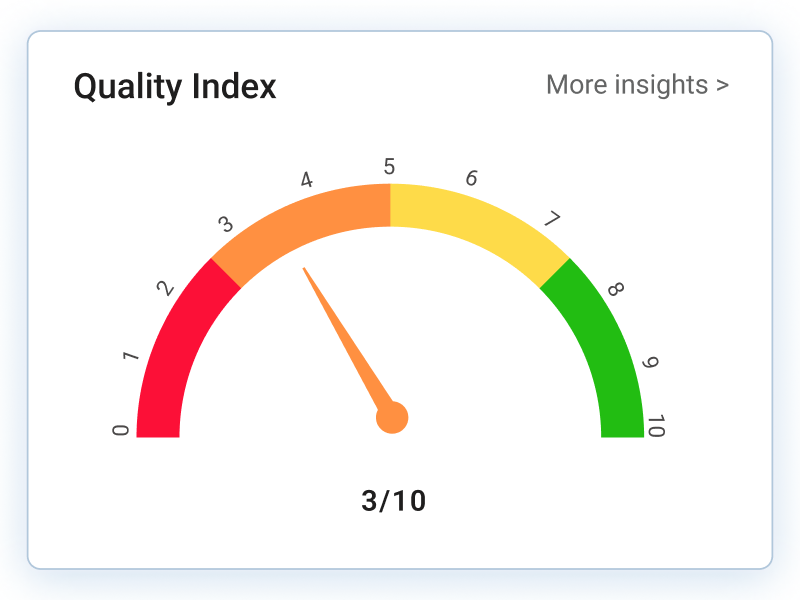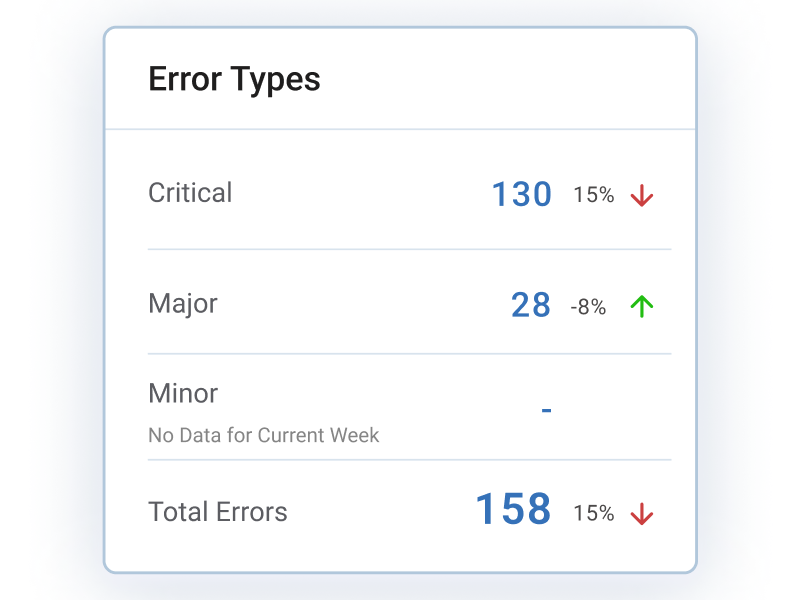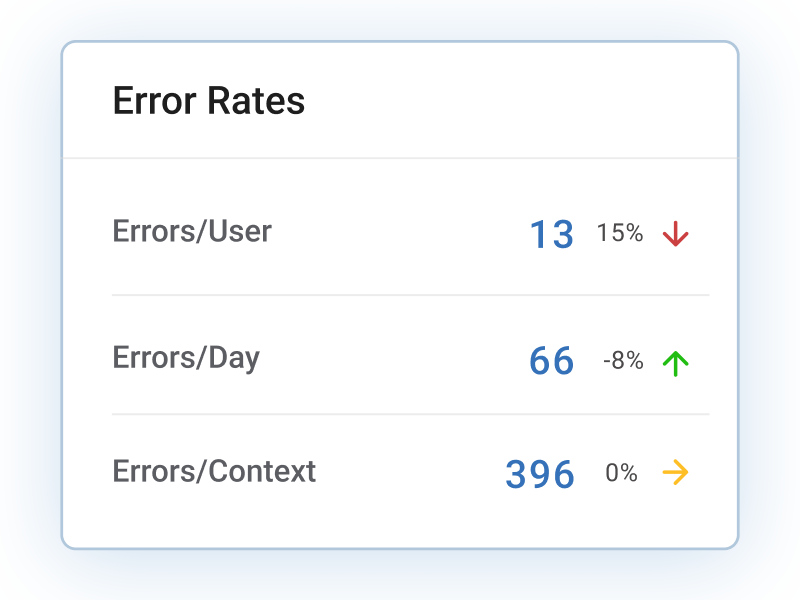Error Types, Frequency, and Count – Your Software’s Quality Indicators
In our last post, we talked about how we identify users impacted and context impacted, and whether defects are affecting the most critical aspects of your customer experience. But what can we understand about the defects and how can that add to our understanding of software quality?

Today we move on to the final three measures that go into the Quality Index, Error Types, Error Frequency, and Number of Issues.
Our AI determines whether an error is critical, major, or minor as soon as an error is reported. Error types are weighted as the most important detail in the overall Quality Index. Again, the detail behind this visualization provides the decision-support needed to prioritize the right defects for attention.

Error Frequency is the third most important factor in our Quality Index score. The quality dashboard shows the error rate per user, per day, and per context, all of which have declined nicely over the previous period.

Because our plug-ins are ingesting all activity in a structured way we are recording and analyzing who is taking what action and when. By correlating the errors our error detection algorithm identifies with the user, day, and wherein the user flows the errors occur, we can report their rate relative to users, day, and context and how that is trending over the previous period.

With Error Types and Error Frequency objectively measured we are left with the final measure of the five quality measures that make up our Quality Index, the number of issues that are detected, and the total number of errors or defects detected.
By accurately ingesting and analyzing the data and rolling it up into a single, objective measure we make it easy to get a quick answer to the question “How is our software doing?”. And through our interactive visualizations, you have immediate access to the data behind the measures and a range of additional details that inform different functions in your business, development, product management, marketing, sales, and the executive leadership team.
Let us know what you think in the comments and please like or share this post if you find it interesting!


